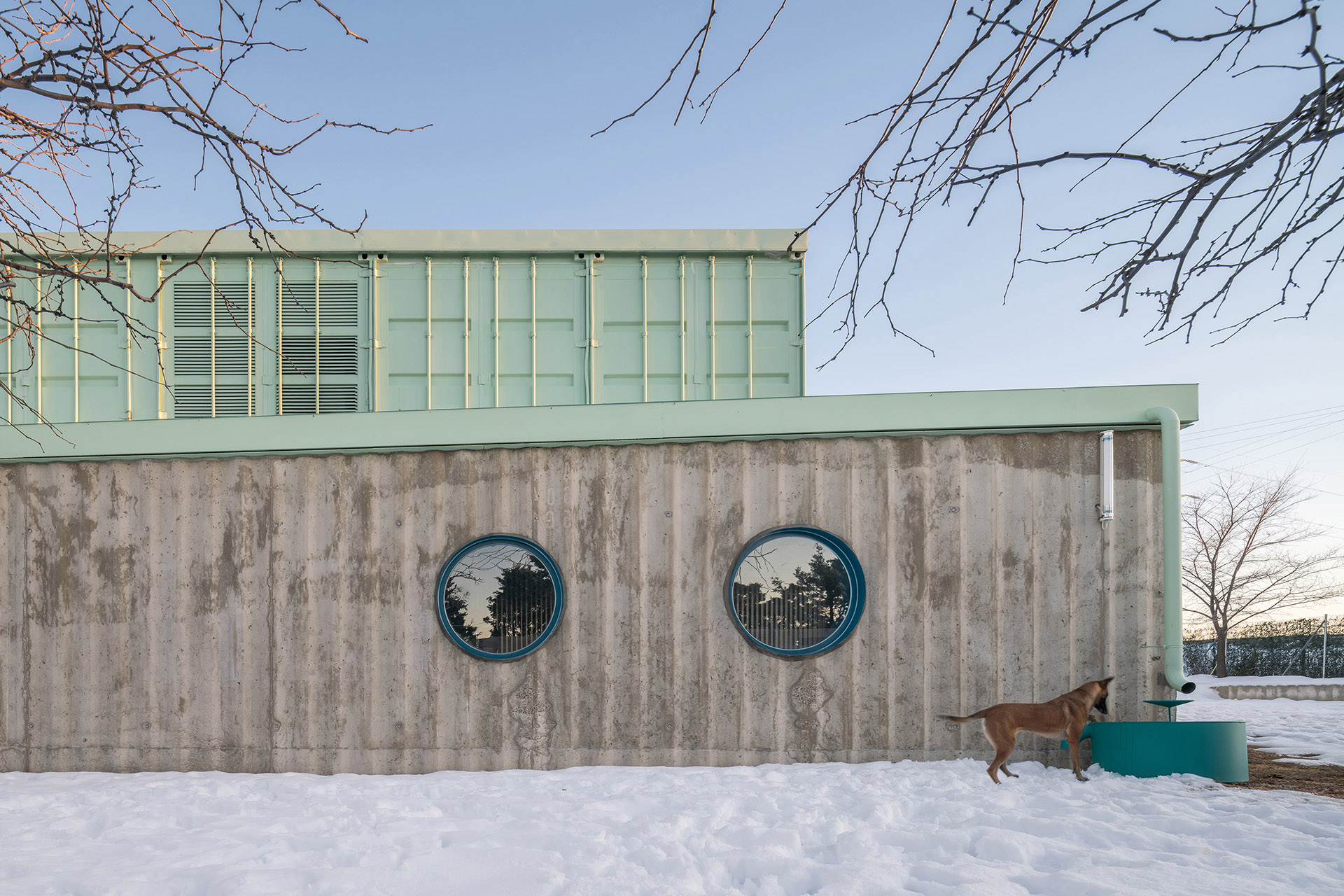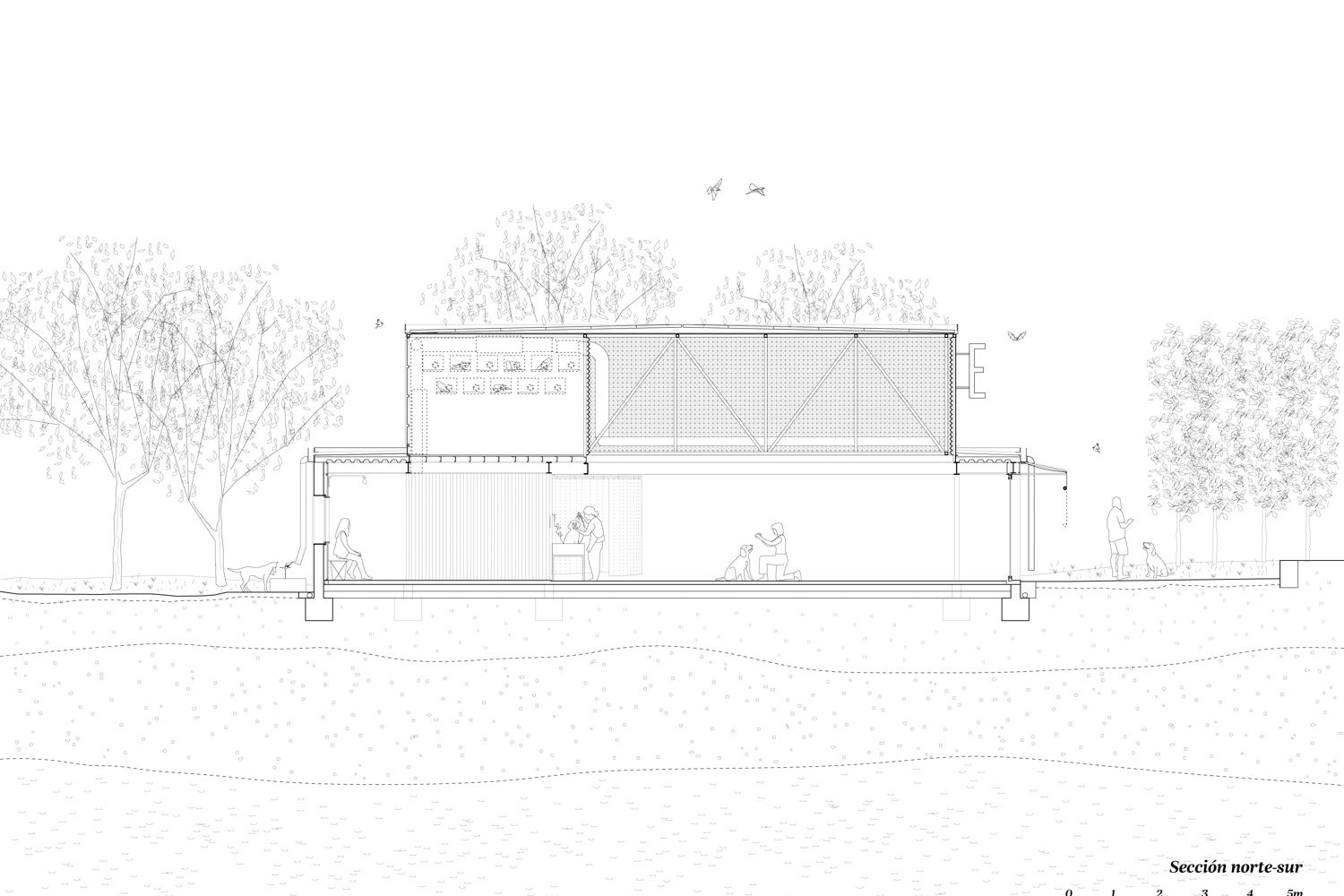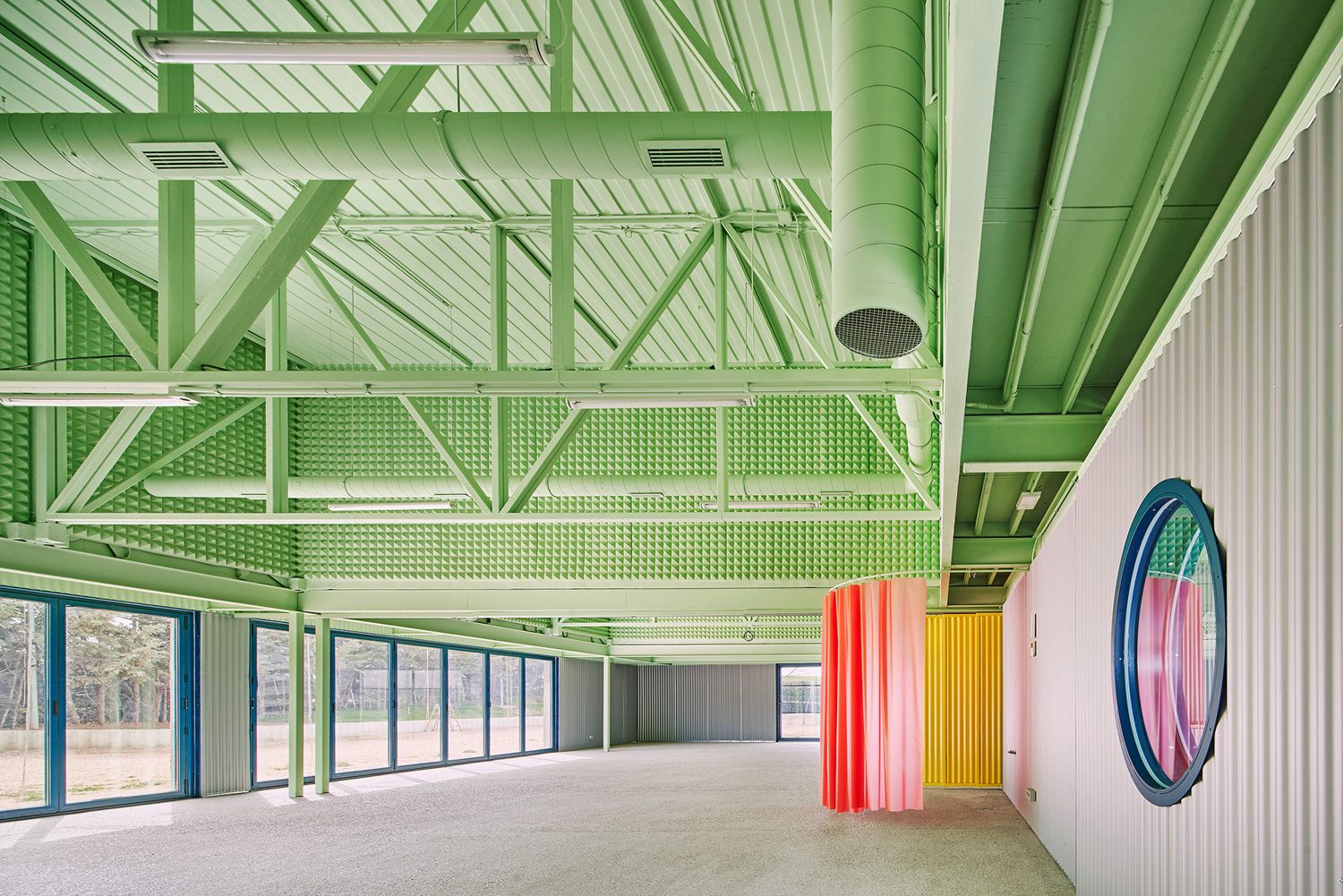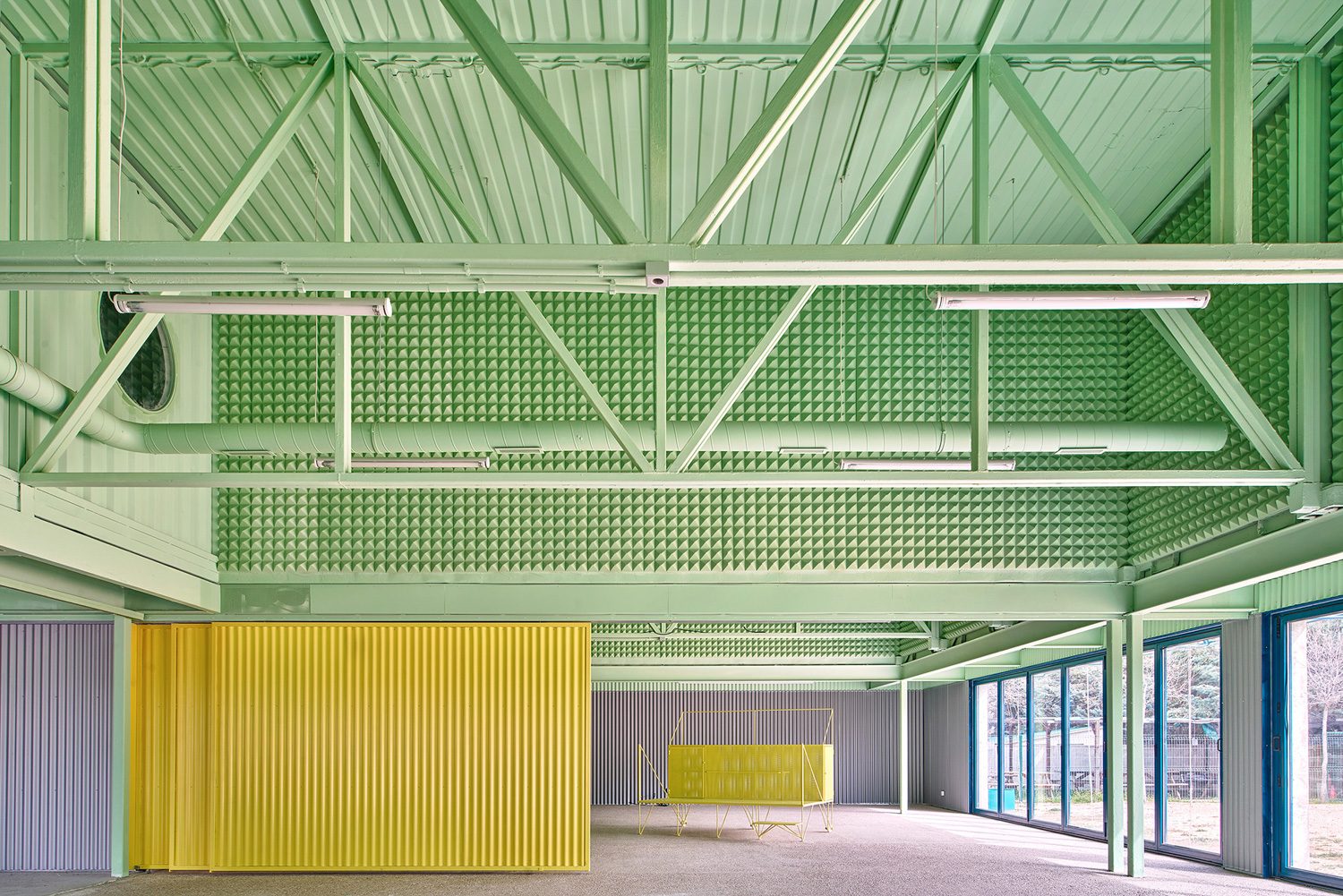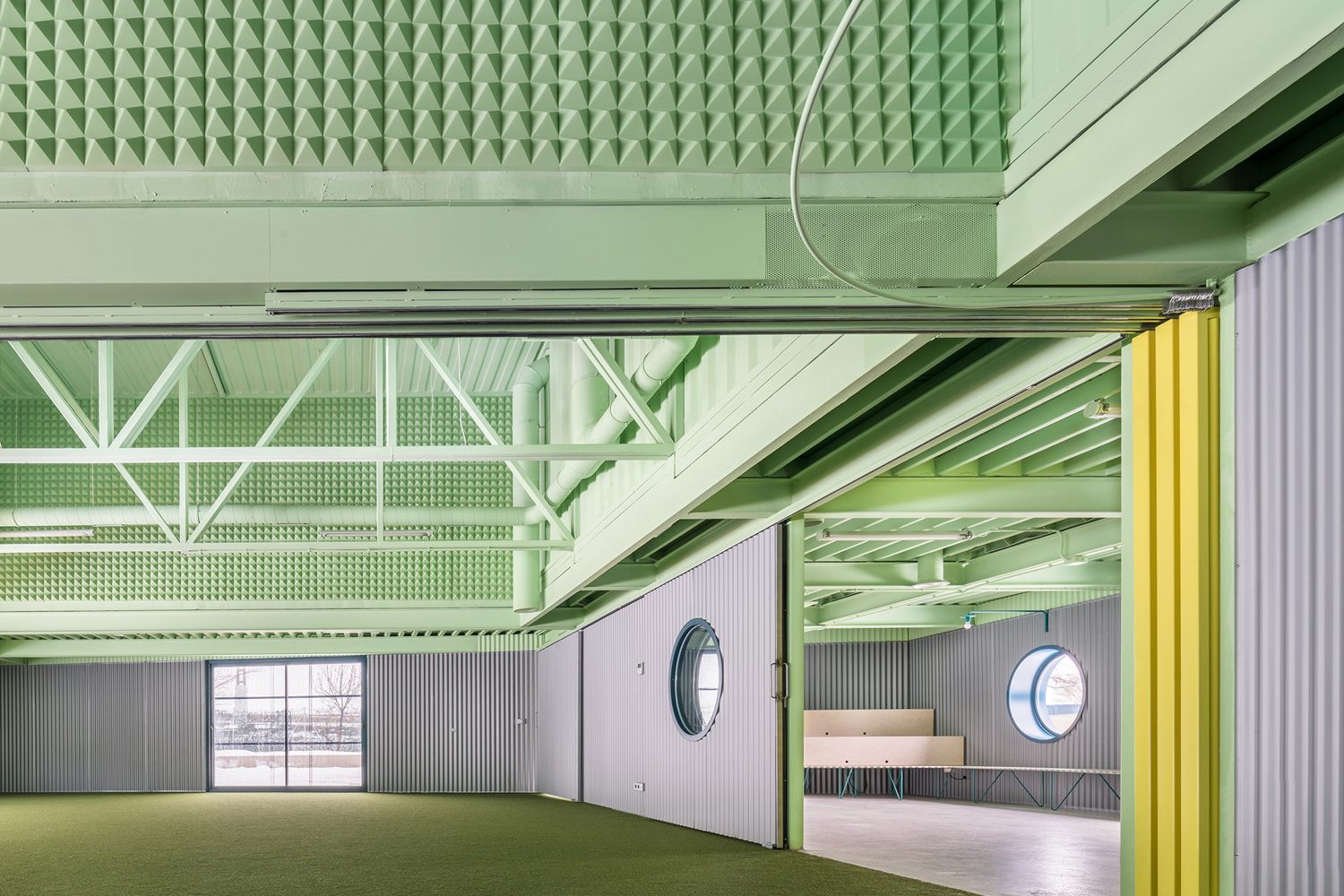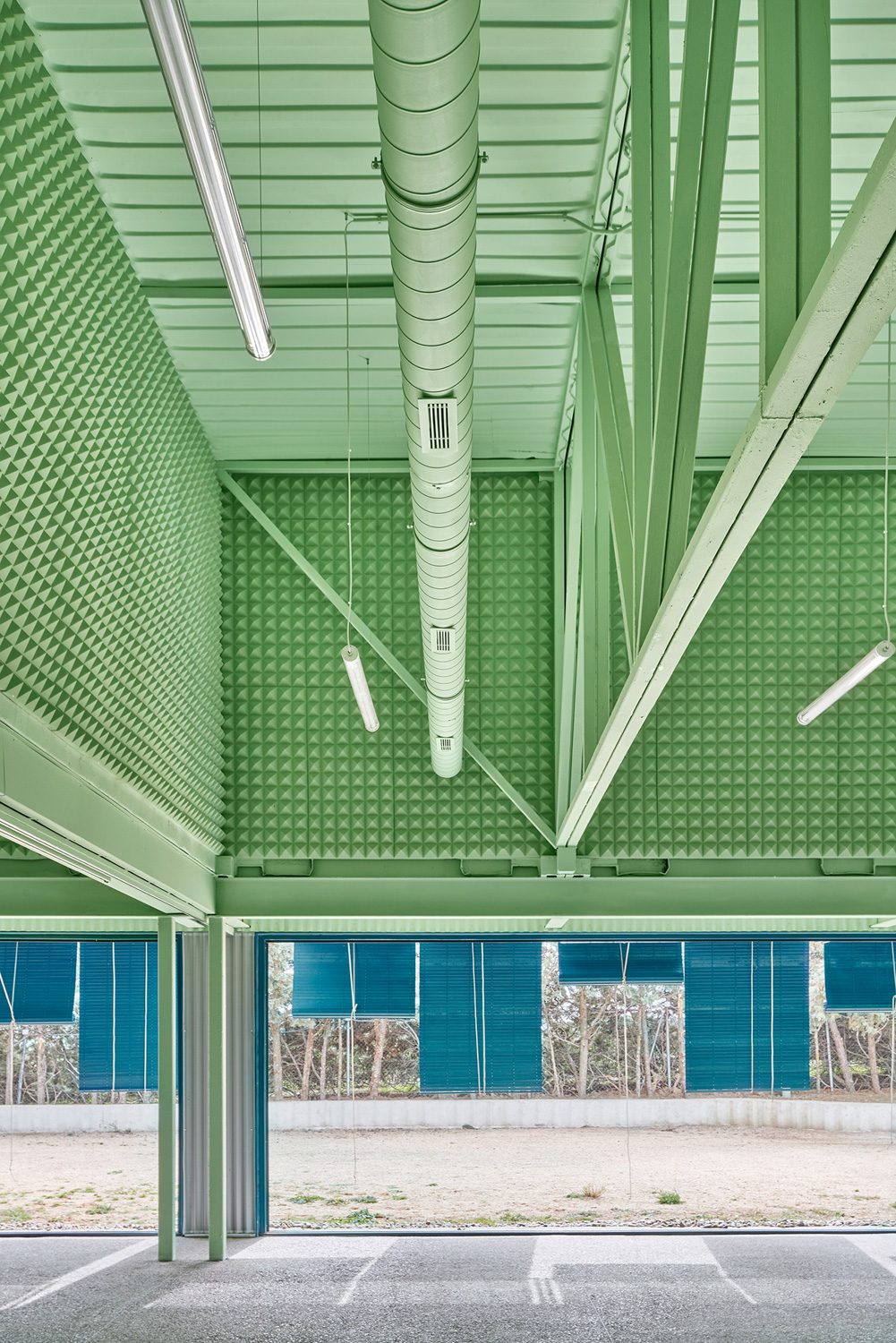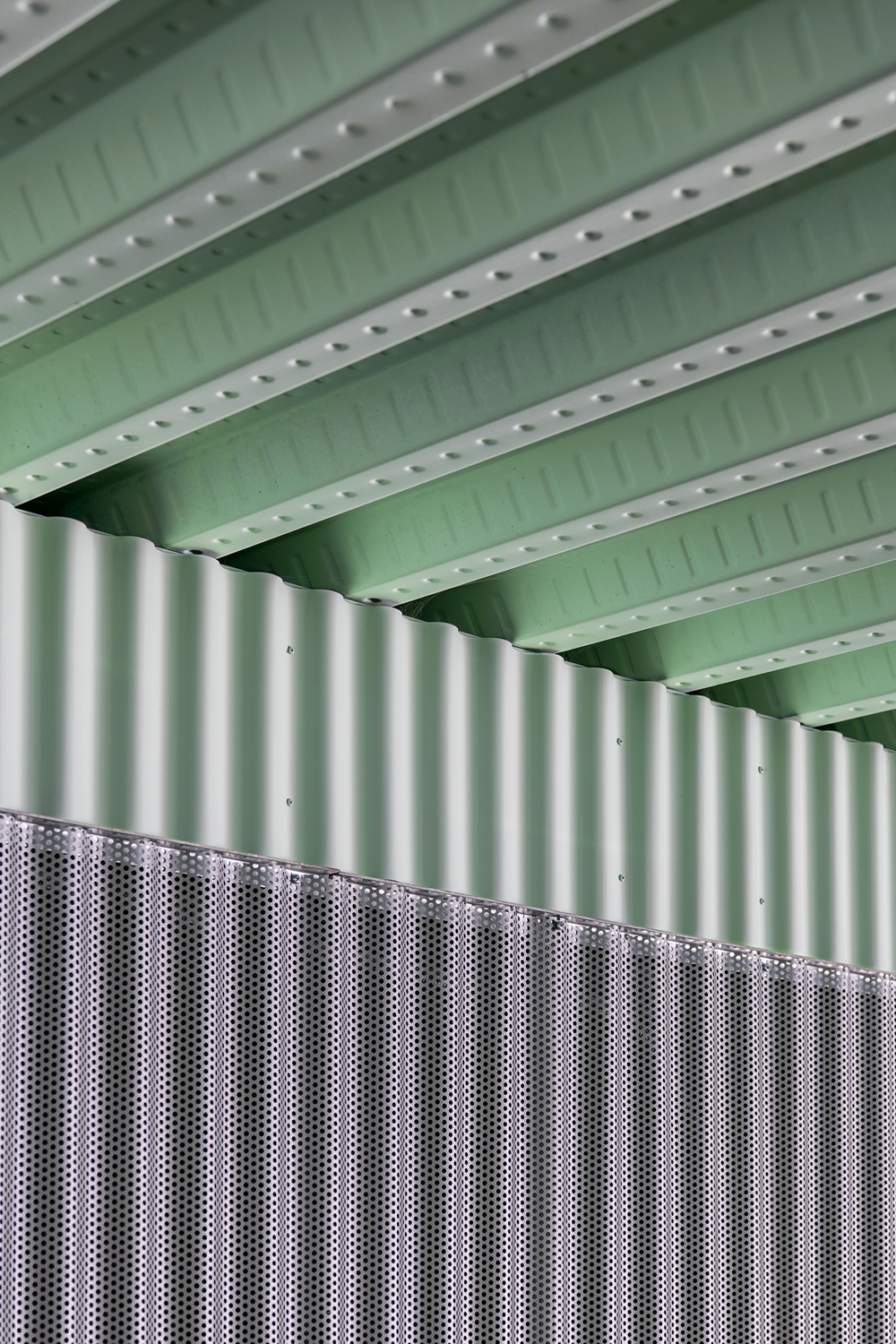CAN ARCHITECTURE CATER TO THE LIVES OF OTHER SPECIES APART FROM HUMAN? EDUCAN SCHOOL FOR DOGS, HUMANS AND OTHER SPECIES BY ENRIQUE ESPINOSA AND LYS VILLALBA IS DESIGNED TO BE BENEFICENT TO HUMANS, AND OTHER ANIMALS SUCH AS DOGS AND BIRDS
TEXT: PRATCHAYAPOL LERTWICHA
PHOTO: JOSÉ HEVIA except as noted
(For Thai, press here)
It’s perfectly normal for an architectural structure to be built to fulfil certain human needs. But can architecture cater to the lives of other living species?
Enrique Espinosa, architect of Eeestudio and Lys Villalba, designs a canine training facility, Educan, in Brunete, Spain, into a structure that is beneficent to both humans, dogs and other animals residing in the area including owls, bats, kestrel hawks, swifts and sparrows.
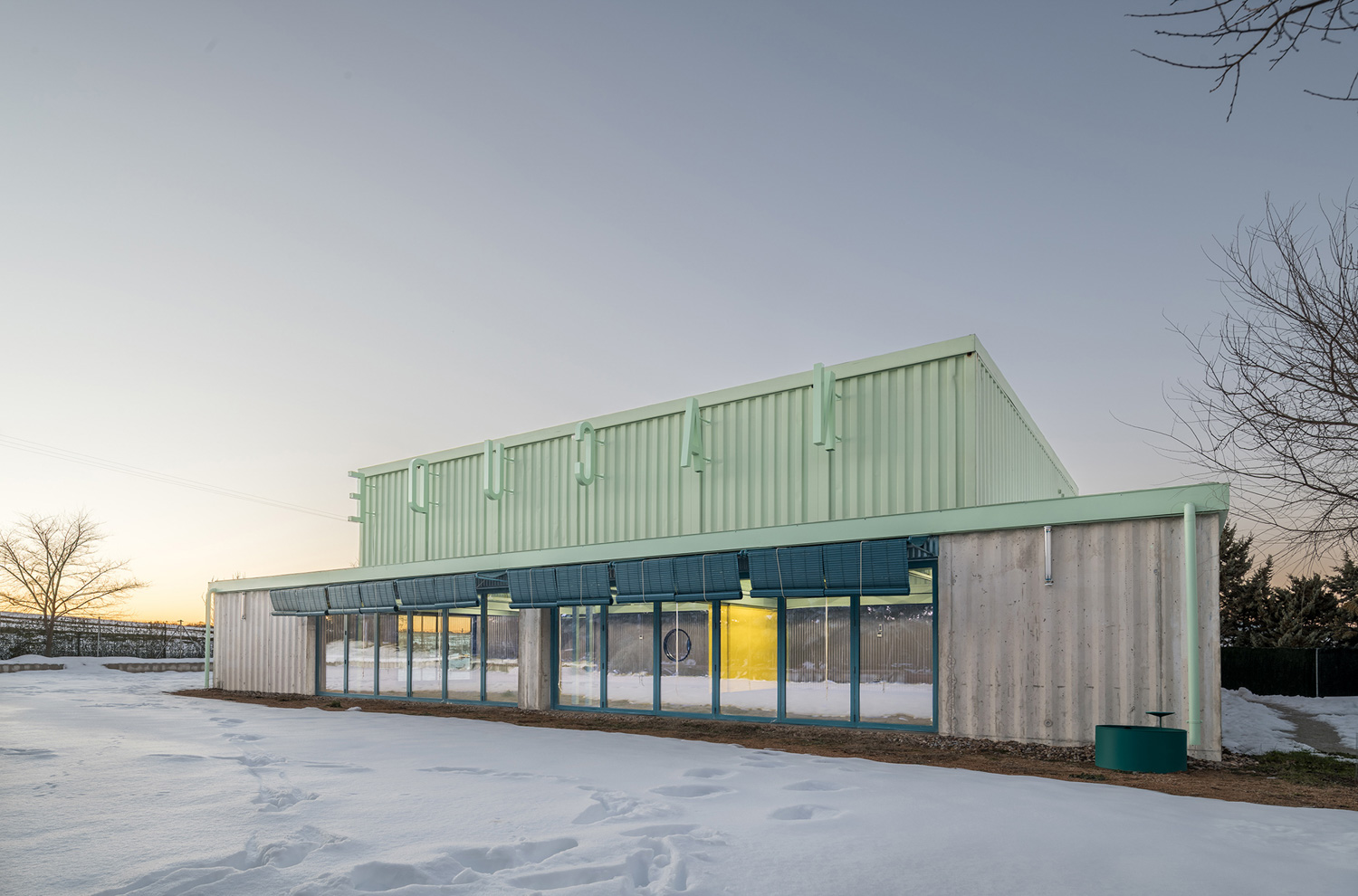
Photo: De Paz

Photo: De Paz
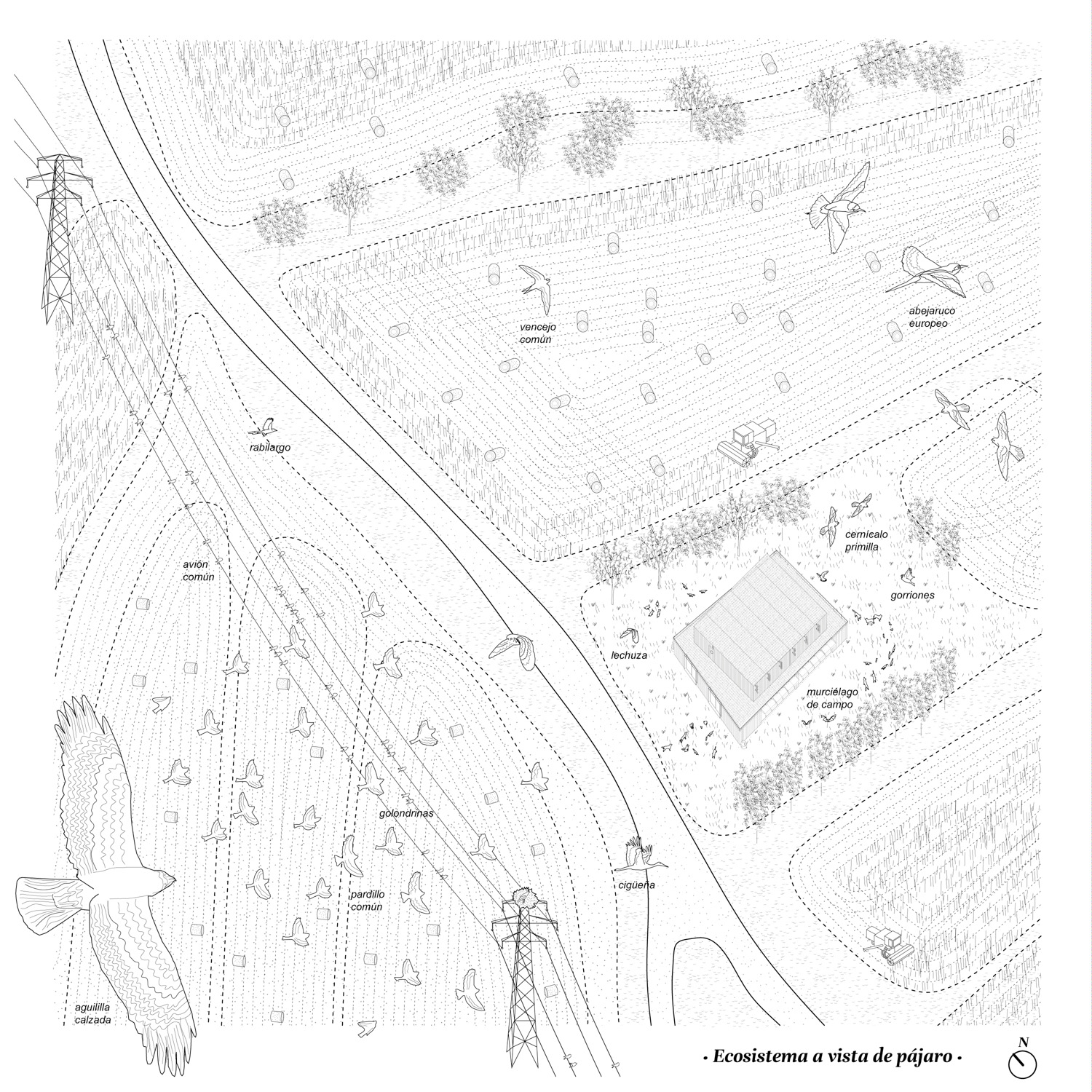
Drawing courtesy of Eeestudio
“Sitting amongst fields, in a rural environment transformed over recent decades by urban development and intensive pesticide-reliant agriculture, Educan is trialling ways to recover the conditions of theecosystem,” said Enrique Espinosa and Lys Villalba, the two architects of the project.
Enrique Espinosa and Lys Villalba designed Educan into a one-story building that looks like a considerably sized warehouse, painted in bright beautiful colors. The 300-square meter structure houses three different zones; the reception area, the interior classrooms and the training ground.

Photo: De Paz
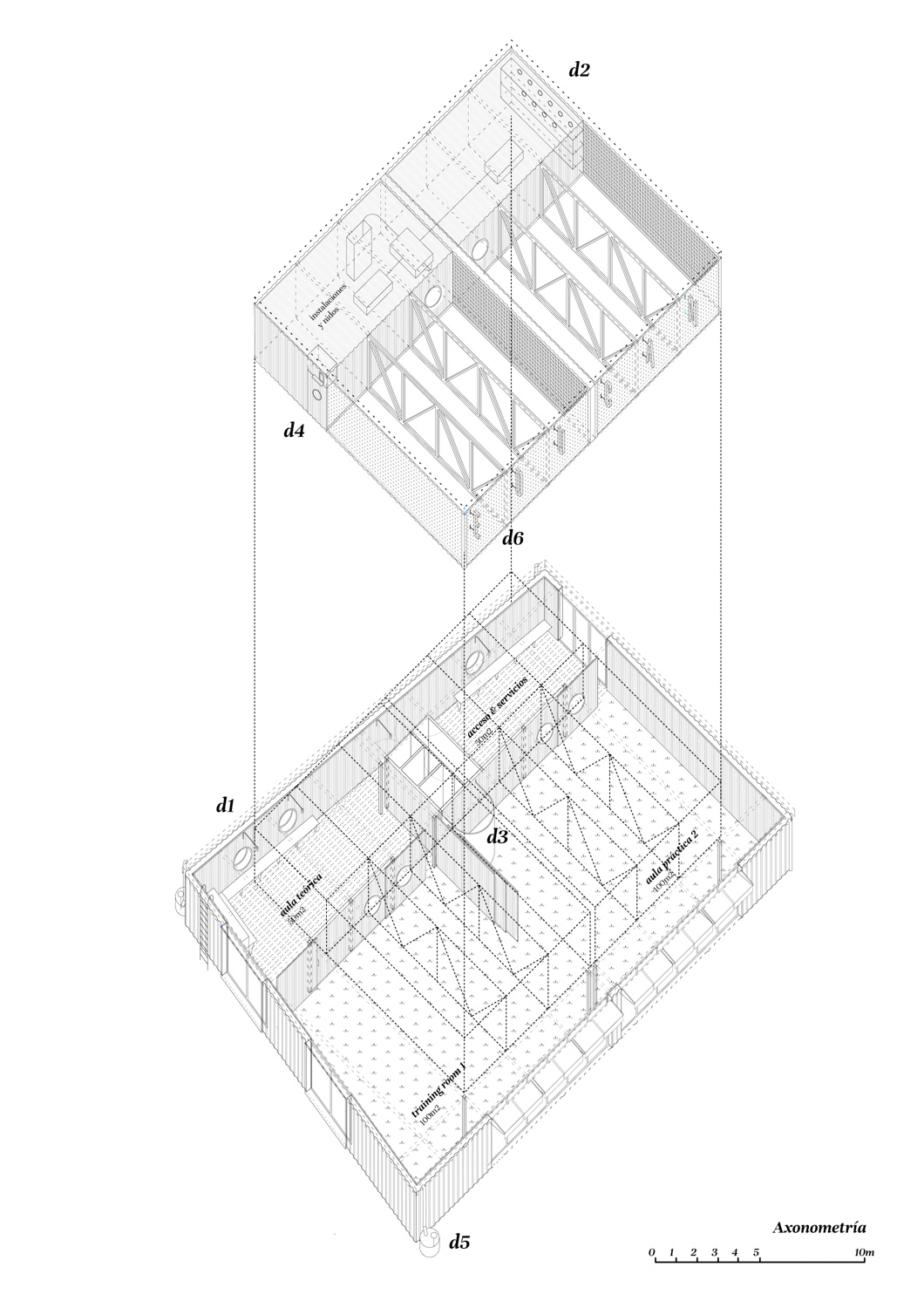
Building Axonometric l Drawing courtesy of Eeestudio
With the primary functionality being a canine training school, the architects have designed the building to be particularly dog-friendly. The material of the floor is a concrete and river pebbles, while elastomer, an artificial grass is used with the floor of the training ground to best support the paws of the dogs, consequently improving the communication between humans and canines in training. Not only that, the architects place a series of circular openings to be one meter above ground and out of the dogs’ eye level to minimize any distraction during a training session. Roller blinds are installed at the south wing of the building to filter sun rays from coming into the interior training zone.
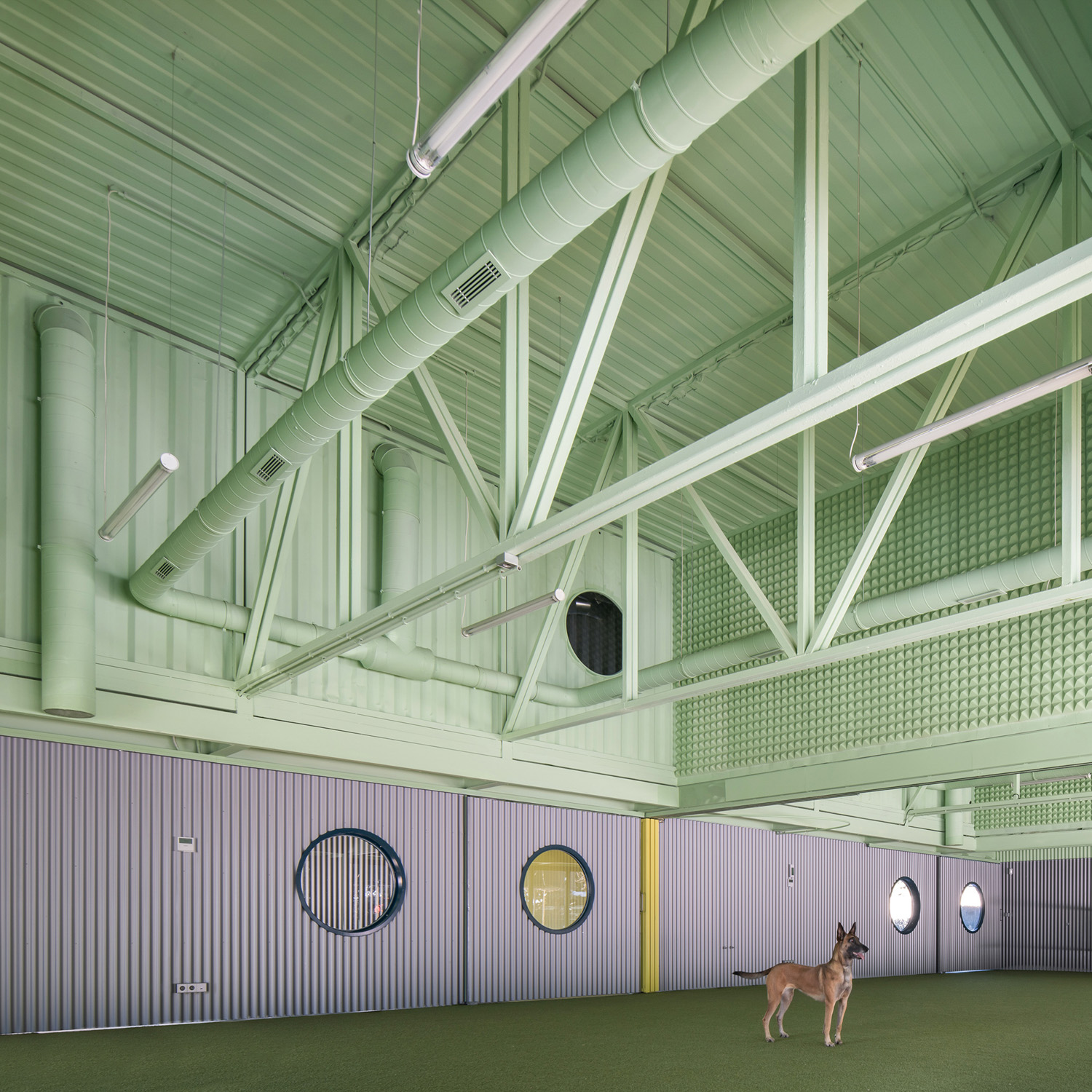
Photo: José Hevia

Photo: José Hevia

Photo: José Hevia
The architects have also designed the building to accommodate other animals. Bird nests of various sizes are placed in different spots with types meticulously created to suit each type of bird such as the nest of the kestrel hawks hidden behind the east wall while the owl nest is placed above the doors toward the west wing of the building, each has a small stand in the front for owls to observe and locate their prey before starting the hunt. Meanwhile, inside and behind the ‘Educan’ sign installed at the upper part of the building is where the bats cluster. The architects also provide small areas at different parts of the facility where buckets are placed to collect the diverted rain water for the animals to drink from.
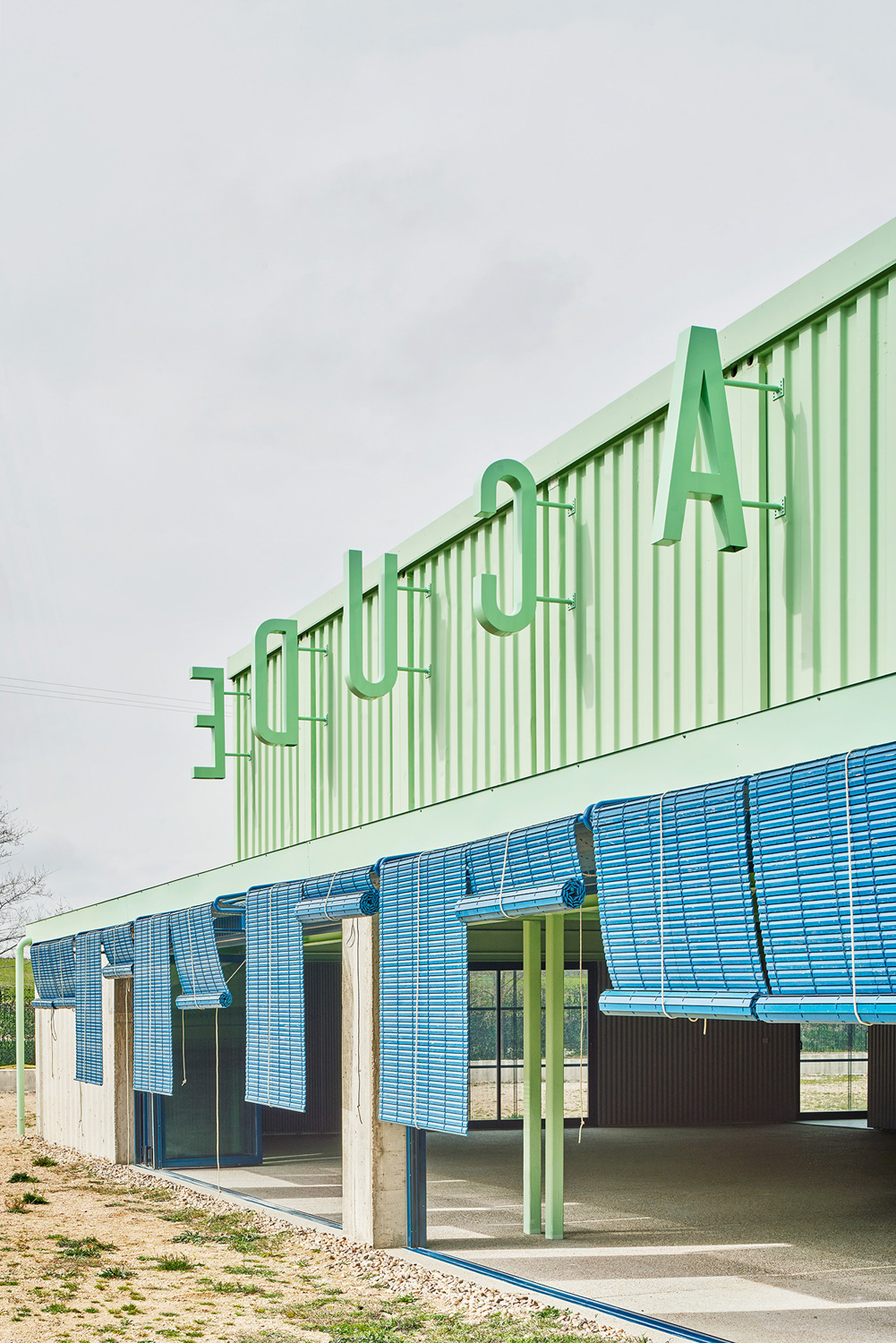
Photo: José Hevia

Building Details l Drawing courtesy of Eeestudio

Photo: José Hevia
“The building welcomes small birds of prey that feed on rodents, maintaining a balance with crops and other local flora. Small birds and bats feed on insects, including mosquitoes that can carry certain canine diseases, and are part of the pollination cycles of flowers and plants in the surrounding fields.” explained Espinosa and Villalba
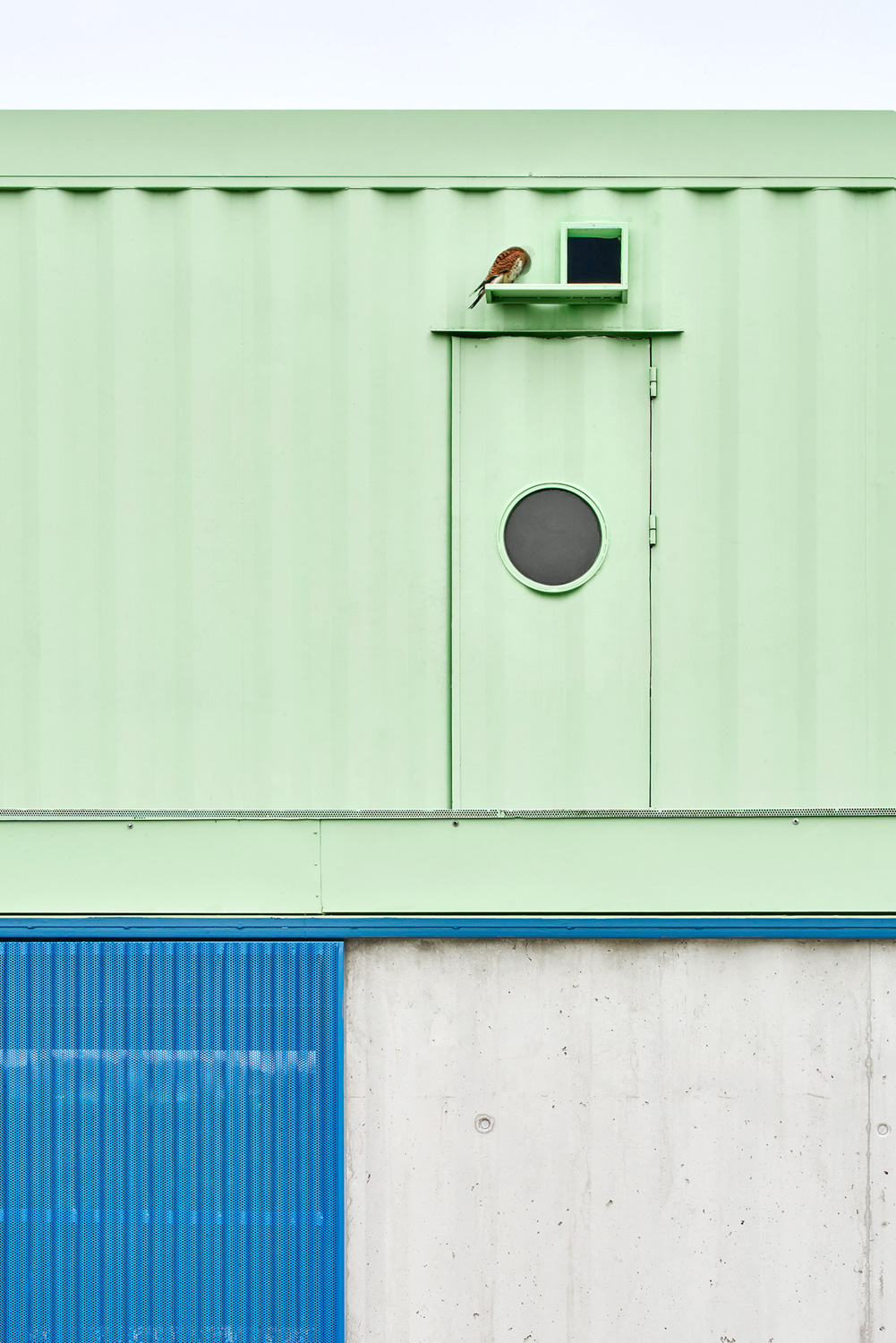
Photo: José Hevia
The architects intended to create the building to be an eco-friendly architecture that helps nurture the local ecosystem and animals. Old container units are converted into the building’s roof structure while the leftover parts are transformed into mouldings for the concrete casting process, which ultimately renders an interesting outcome from the unique looking undulating concrete walls.

Construction Details l Drawing courtesy of Eeestudio
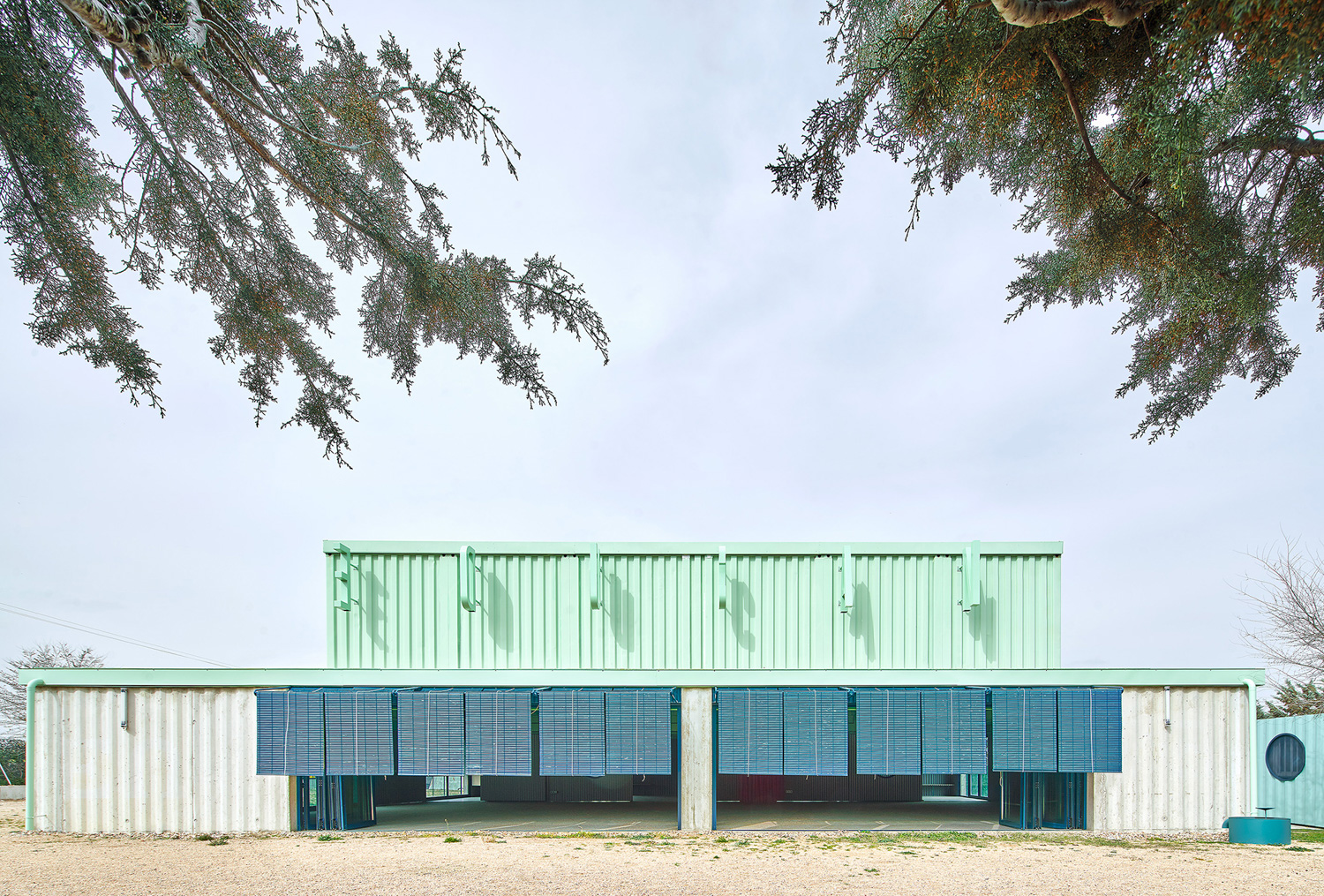
Photo: José Hevia
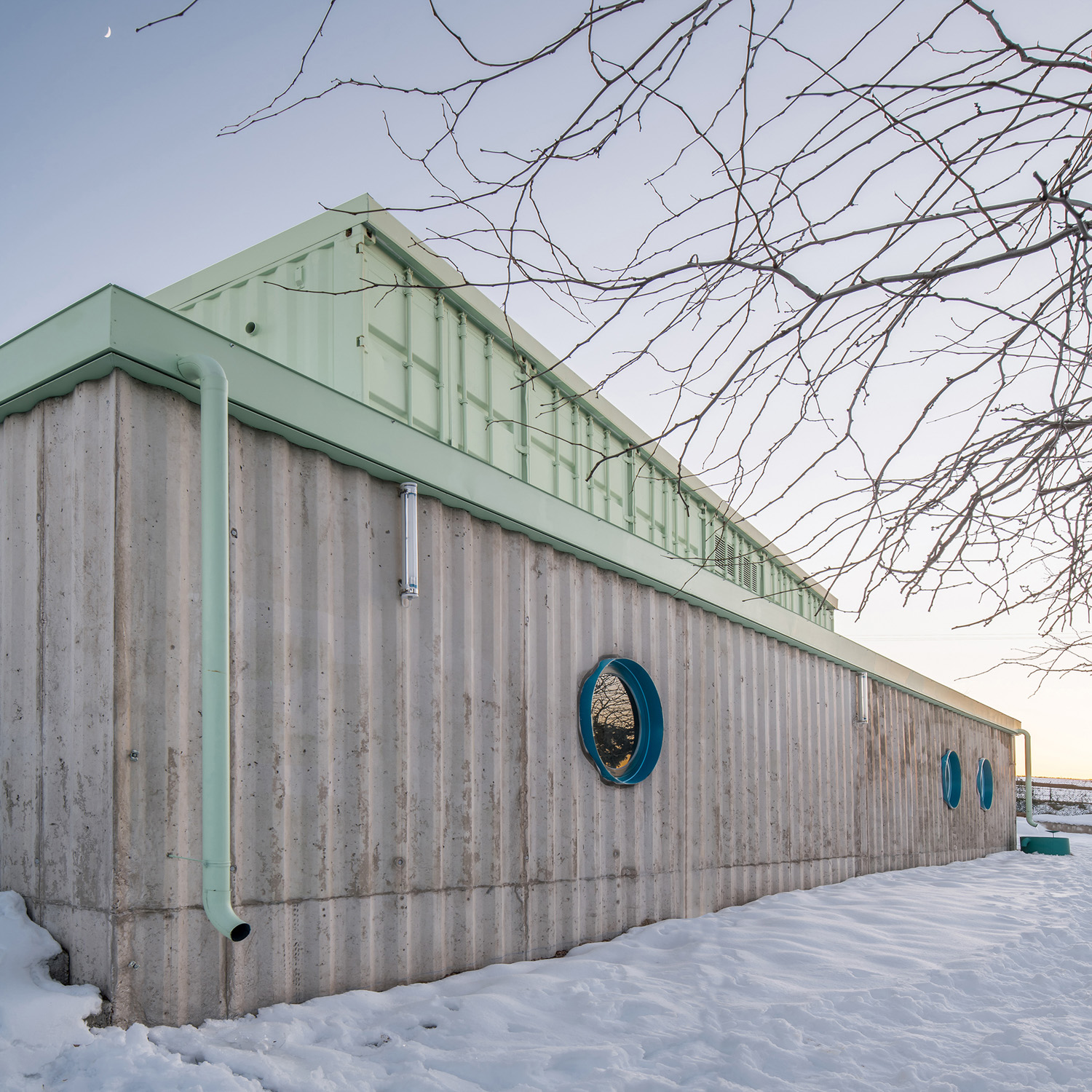
Photo: De Paz
The building is also a result of the architects’ experimentation on different construction materials and details, from the use of CNC technique for the making of the benches whose undulating pattern goes together nicely with the walls, to the handmade steel legs of the benches and lamps. With the ubiquitous presence of industrial materials, colors are used to help blend such diversity into one architectural narrative. It appears that Educan has succeeded in what it intended to do, which is to bring joy and happiness to the dogs, birds and its human users as well as the two architects who have helped to bring this dog training facility to life.

Photo: De Paz
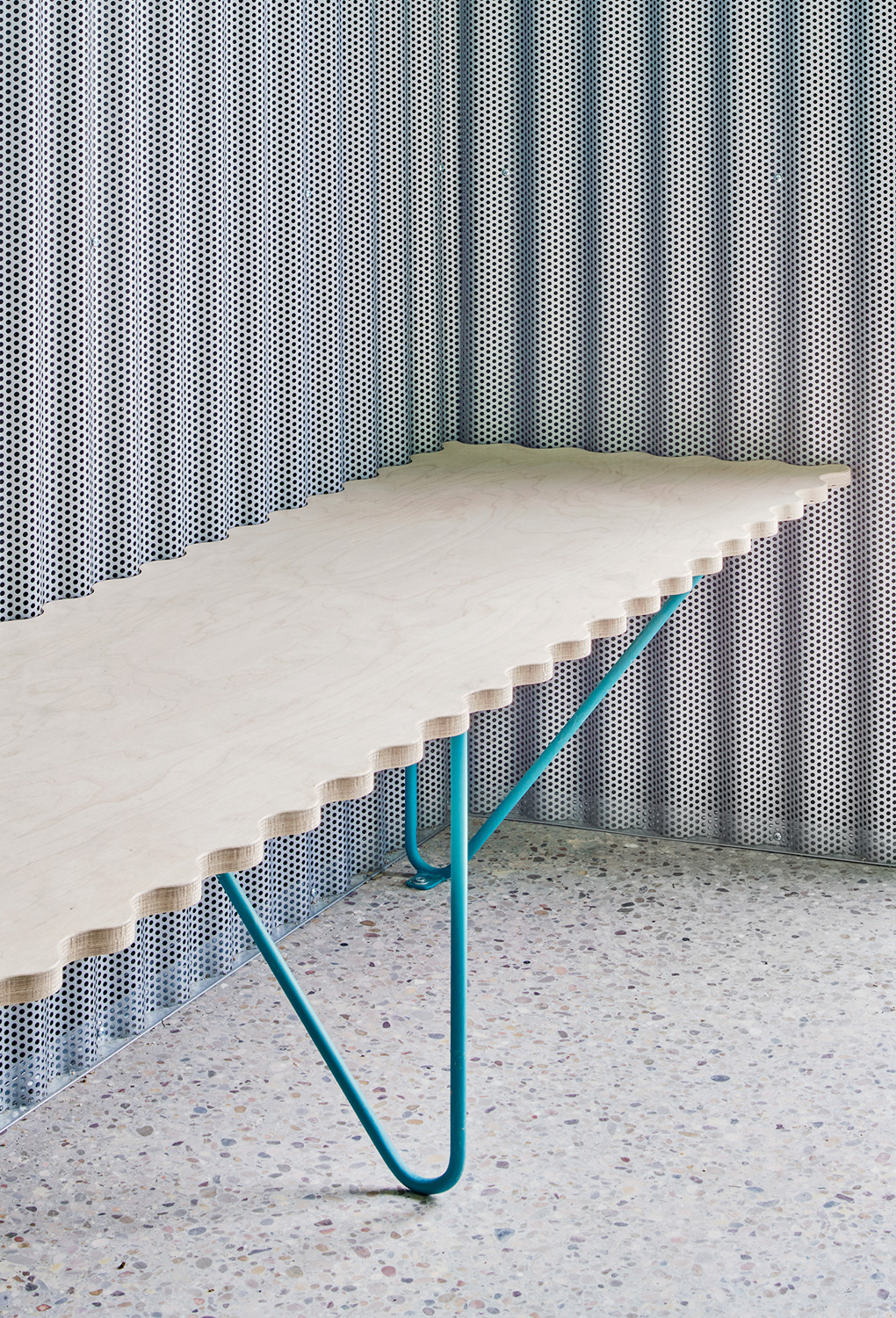
Photo: José Hevia
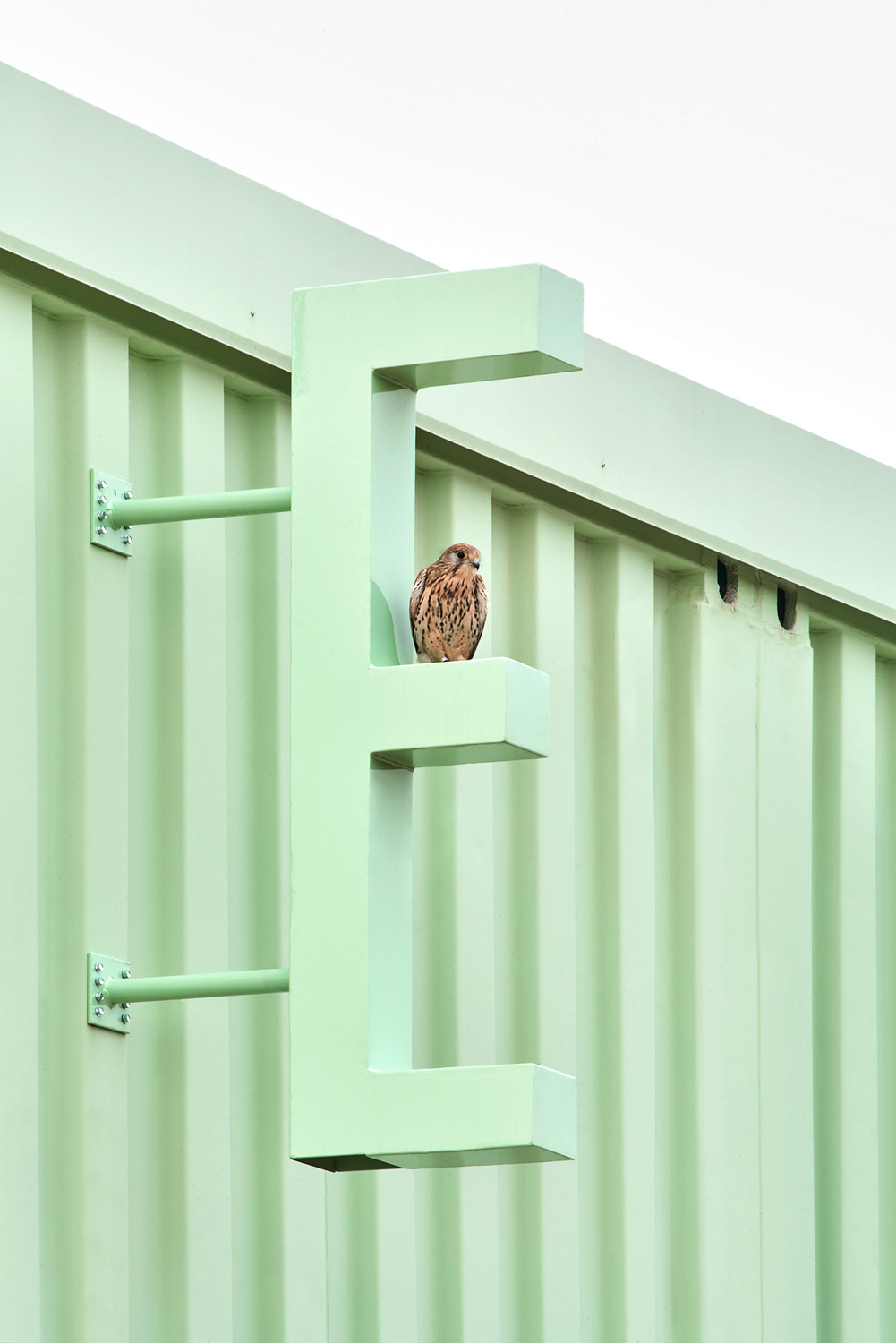
Photo: De Paz

